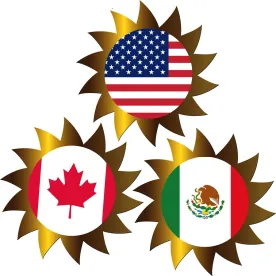Introduction
On May 18, 2017, the United States Trade Representative (USTR) Robert Lighthizer announced the Trump Administration’s intention to initiate negotiations with Canada and Mexico regarding the “modernization” of the North American Free Trade Agreement (NAFTA). Notably, USTR Lighthizer’s letter invoked the Bipartisan Congressional Trade Priorities and Accountability Act of 2015 (TPA 2015 or “fast track”) and the legislation’s extensive consultation provisions will govern the modernization efforts. Upon publishing its Federal Register Notice on May 23, 2017, USTR is soliciting submissions from parties with an interest in the NAFTA negotiations.
The Timing and Tempo
The fast track process initially required the USTR, on behalf of the President, to consult with the Committees on Negotiations selected from the House Ways and Means Committee, the Senate Finance Committee, and other congressional committees regarding the negotiations, which USTR Lighthizer completed prior to issuance of the formal notice. USTR may begin its formal negotiations with Canada and Mexico ninety days (90) from the issuance of the formal notice (May 18, 2017). The formal negotiations will begin mid-August 2017.
USTR will now undertake a consultation process with stakeholders and has published a Federal Register Notice soliciting public comments on NAFTA, which is intended to assist the Trump Administration in identifying its negotiating priorities. The Federal Notice requests comments on “matters relevant to the modernization of the NAFTA”, and in particular, invites comments from interested parties on the following topics:
-
modifications to rules of origin or origin procedures for NAFTA qualifying goods;
-
customs and trade facilitation issues;
-
treatment of specific goods, including import and export interests or barriers and tariffs on articles;
-
trade remedies;
-
labor issues;
-
environmental issues;
-
investment issues;
-
intellectual property rights issues;
-
digital trade issues;
-
government procurement issues;
-
competition-related matters;
-
and any other relevant barriers to trade between Canada, the U.S. and Mexico.
Written submissions are due to the International Trade Commission (ITC) on June 12, 2017 and the ITC will hold a formal hearing on June 27, 2017. USTR will use these hearings to develop the list of specific objectives that needs to be released at least 30 days prior to the launch of formal negotiations. Specifically, TPA 2015 requires USTR to publish more-detailed negotiation objectives and a description of how the agreement will further those objectives at least 30 days prior to initiating formal negotiations.
NAFTA renegotiations will formally begin no earlier than August 16, 2017. However, as the Trump Administration will use the 90-day window to develop its negotiation strategy and areas of focus, companies with an interest in the NAFTA renegotiation would be well advised to communicate their positions or concerns to the USTR, the Trump Administration and congressional stakeholders.
The Government of Canada has not yet issued its notification regarding its launch of consultations, however it is expected to undertake a similar consultation process leading up to August 16, 2017.
What’s on the Table?
President Trump has not clearly articulated his specific goals for a NAFTA renegotiation; however, judging by his Administration’s rhetoric since his election, many enduring Canadian trade irritants may be on the table, such as Canadian dairy and poultry controls.
There are also a few topical high-profile issues that may play a significant role. Recent duties imposed by the Canadian Government on American gypsum (drywall) have been a point of contention for American industry. Softwood lumber also has the potential to play a significant role in Canada-U.S. negotiations. Although the U.S. has stated its intentions to continue softwood lumber negotiations on their own in the hopes of finding an agreement in the 90 days before NAFTA negotiations begin, if an agreement is not reached by that time, it would not be surprising to see softwood lumber fall in line as part of NAFTA renegotiations. In that case it is conceivable that softwood lumber will be dealt with in a distinct NAFTA chapter, similar to NAFTA’s chapters on energy and financial services.
The Trump Administration’s overall goal appears to be eliminating provisions that promote the off-shoring of American manufacturing. The most conceivable route to confront this issue will be to address the rules of origin under NAFTA, as the Trump Administration seeks to restrict access to the U.S. market for goods of Canadian and Mexican origin and/or restrict access to the overall North American market by reducing the quantity of non-NAFTA origin inputs that are permitted in NAFTA-qualifying goods. U.S. Department of Commerce Secretary Wilbur Ross has hinted that the auto parts sector would be a particular focus of rules of origin changes.
Dylan Augruso contributed to this post.




 />i
/>i
